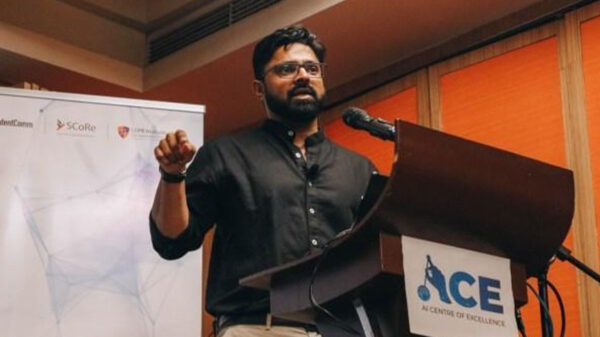In recent years, Metaverse has become one of the biggest buzzwords in the across industries—most especially in technology and popular culture—with major stakeholders making investments to help create the convergence of the digital and physical worlds. For the layman, the Metaverse is a 3D virtual universe where users can gather as a group of avatars, interacting with one another in surroundings that replicate the physical world with select modifications.
As cryptocurrency becomes more widespread and digital financial capabilities continue to grow, the establishment of the Metaverse couldn’t come at a more suitable time. The virtual world opens a world of opportunities for users to try out various activities that they can normally do in real life, only it’s online and in a completely new space. It also offers a novel and immersive internet experience in which major brands across various industries are eager to join in.
In the Philippines, the Metaverse is ripe for business opportunities, especially for small and medium enterprises who have come to rely on digital tools for their businesses amid the pandemic.
“Given the growing interest and excitement surrounding the Metaverse, business leaders must begin their research and develop a better understanding of the Metaverse,” said Abraham Lim, Secure Power Director at Schneider Electric Philippines. “The next few years are crucial for the digital and technology spaces. Leaders must be prepared for what the constant evolution of technology could have in store for them, and what it will take to bring the Metaverse to life.”
Betting the Future of Business on the Metaverse
The world is transforming at a rapid pace. Given the onslaught of digital and technological changes, organizations will need to keep up with emerging customer demands, which in turn will enable them to navigate the current and future economic environment. For this reason, CIOs across the board must start thinking of ways to drive growth and remain agile. One way to do this is by bringing their digital presence to the next level and be well-prepared to do so, once the Metaverse becomes a reality.
While the Metaverse is still in its nascent stages, given its immersive nature, it can present opportunities for companies. With post-Covid working environments, organizations should leverage on these increasingly creative virtual business experiences to connect and collaborate with their own people, as well as enhance their business process and maintain a competitive edge.
“Adopters can also hone their leadership skills and push for resiliency in the Metaverse. As organizations invest in the infrastructure, people, and mindset to assess technologies and innovate, they are more likely to tap into strong use cases and necessary business transformations and consider them in strategic decision-making,” said Lim. “While the conversations and the demo seldom touch upon what is needed and how it works technologically, infrastructure support is an essential foundation that companies and CIOs need to work on if they want to join in the Metaverse universe.”
Bringing Metaverse Closer to the Edge
As the Metaverse is persistent and comprises large amounts of information, connecting to the digital reality requires fast and reliable online speed. Fifth generation wireless communications (5G) can deliver the right bandwidth to support users’ connection to the Metaverse, however, latency poses as a major concern. This is where Edge computing bridges the gap, as it is required to create and transmit large digital contents in real time.
“IT professionals, especially those who are responsible for critical infrastructure, will have to accept that the solutions they are building for their cloud and core data center must extend to an Edge environment,” said Lim. “Companies need to ensure their infrastructure can accommodate the high bandwidth and applications that the Metaverse requires.”
Likewise, the Metaverse pushes for the adoption of Edge computing as it is a key infrastructure that will drive the evolution of Metaverse, enabling its full potential and allowing providers to scale their offerings sustainably.
Moving Towards a More Sustainable Virtual World
While these conversations are exciting and keep the industry adrenaline pumping, the volume of data exchange, bandwidth, and continuous data center operations to keep user experiences smooth is going to cause more heat release and energy usage. At times like these, sustainability is more the crucial than ever.
Leveraging on existing infrastructure can help reduce the formation of new and bigger data centers that can potentially add burden to the environment. Schneider Electric acknowledges the need to build an eco-friendly data center in response to climate change.
The increase in data center functionality during the pandemic, with the construction of hyperscale data centers spreading across the world due to the surge in Cloud services that require large-scale servers and storage. If the pandemic can bring about such a surge, the realization of this virtual world culminating with day-to-day functions will require super computing power and high function data centers which are powered by Edge computing.
“As companies move towards the Metaverse and commission more data centers to support their individual offering and to work with the rest of the ecosystem, they must find partners who can help them kickstart their sustainability journey,” said Lim. “They need to start looking into their Scope 2 emissions, review their current energy mix, and consider clean technologies address their carbon footprint—this is where Schneider Electric comes in.”
Schneider Electric offers a large portfolio of solutions necessary for the establishment of eco-friendly data centers. These include high-level integrated architecture, intelligent power management, and building automatic control solutions and AI-based data center DCIM solutions—all of which are key in helping enterprises build more Edge data centers of the future, which in turn will allow the Metaverse to thrive.










































































































